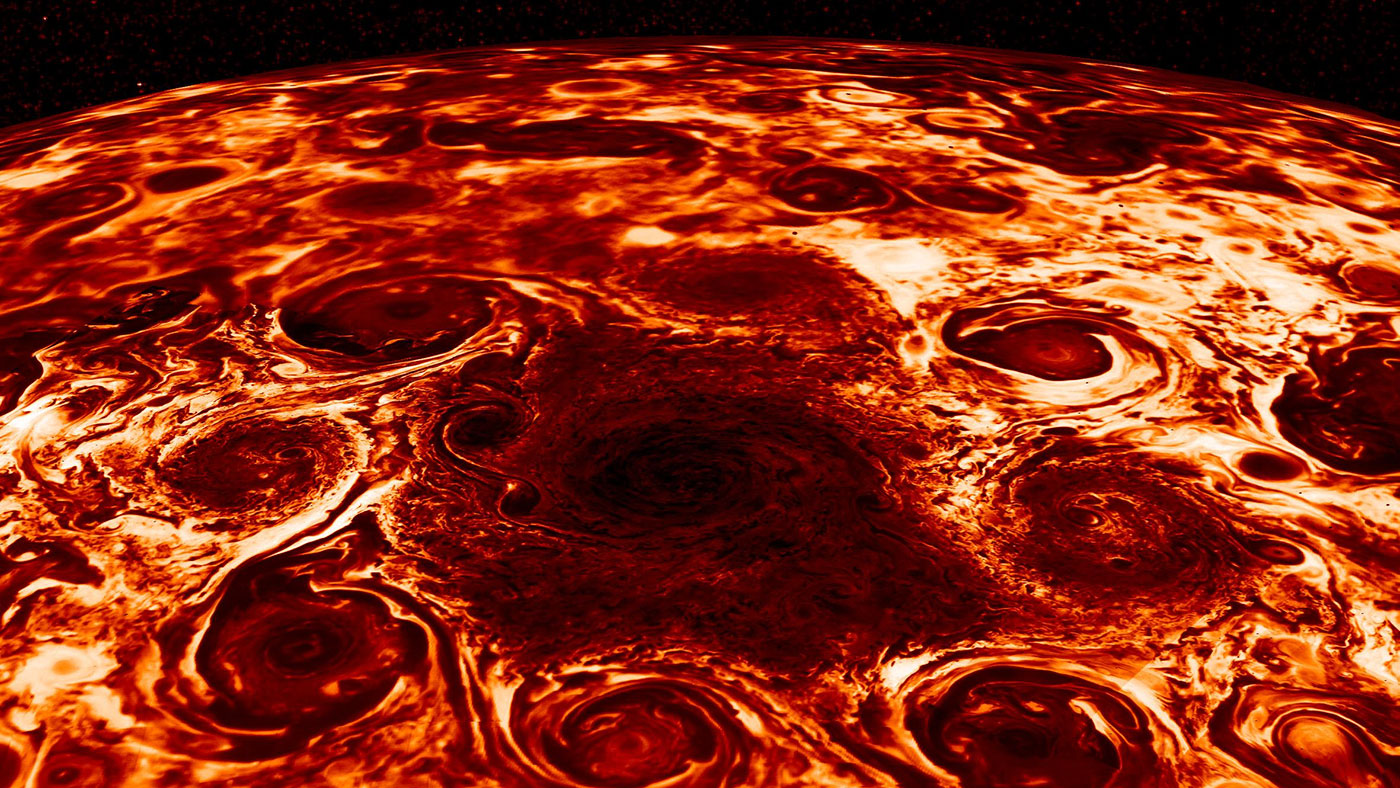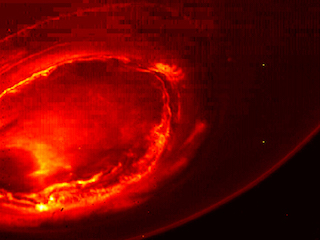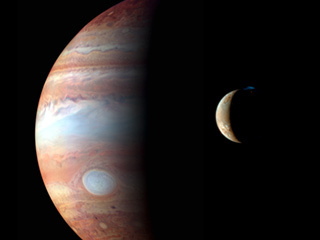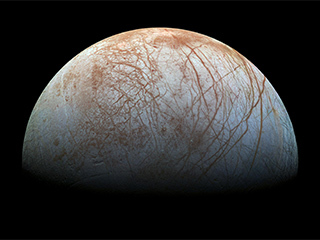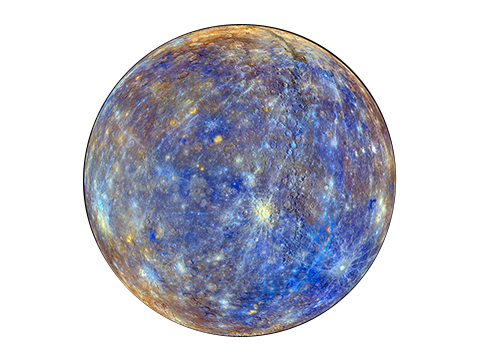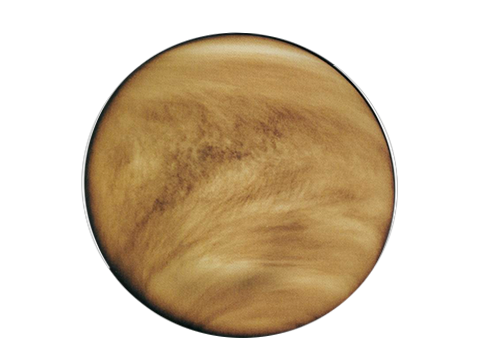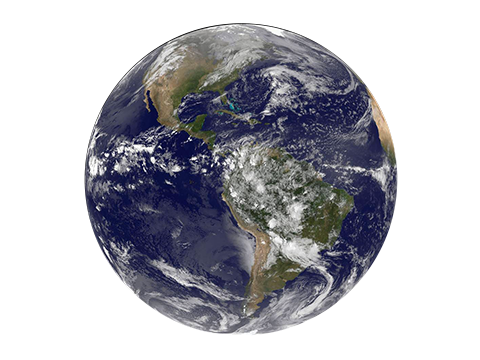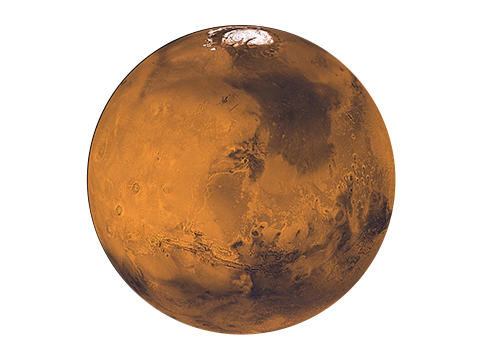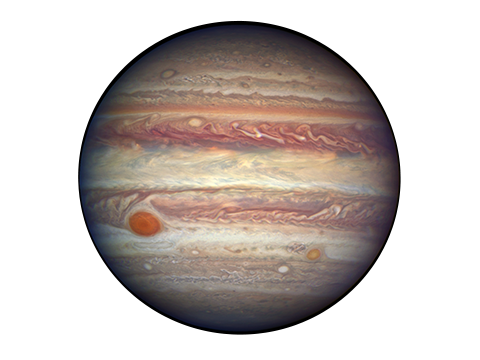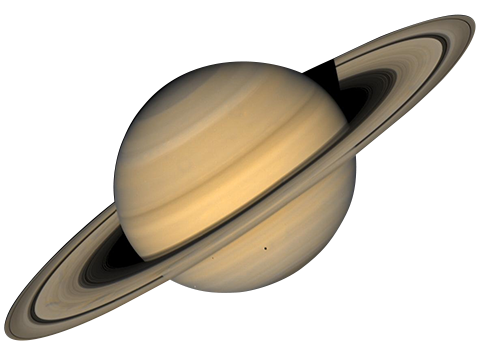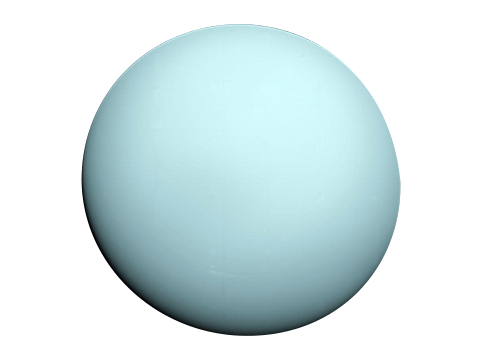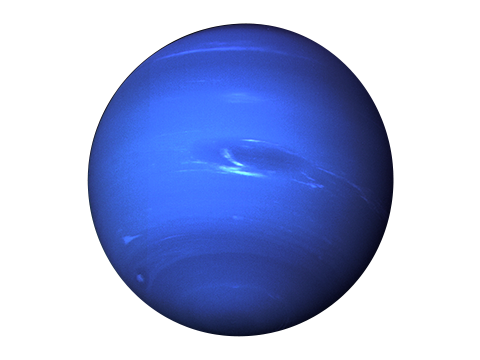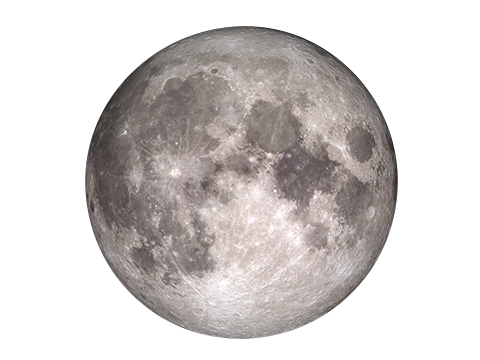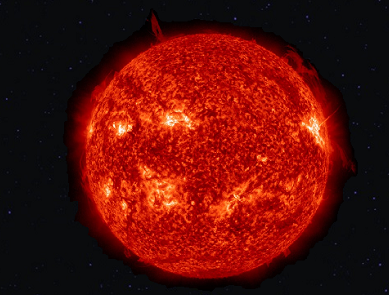-
 JUPITER
JUPITER
Twice as massive as
all the other
planets combined
483,407,670 MI
DISTANCE FROM SUN
43.250447 mins
ONE WAY LIGHT TIME TO THE SUN
4,333 Earth Days
LENGTH OF YEAR
Gas Giant
PLANET TYPE
Jupiter has a long history surprising scientists—all the way back to 1610 when Galileo Galilei found the first moons beyond Earth. That discovery changed the way we see the universe.
Fifth in line from the Sun, Jupiter is, by far, the largest planet in the solar system – more than twice as massive as all the other planets combined.
Jupiter's familiar stripes and swirls are actually cold, windy clouds of ammonia and water, floating in an atmosphere of hydrogen and helium. Jupiter’s iconic Great Red Spot is a giant storm bigger than Earth that has raged for hundreds of years.
One spacecraft — NASA's Juno orbiter — is currently exploring this giant world.
Go Farther. Explore Jupiter In Depth ›
10 Need-to-Know Things About Jupiter
1 THE GRANDEST PLANET Eleven Earths could fit across Jupiter’s equator. If Earth were the size of a grape, Jupiter would be the size of a basketball.
2 FIFTH PLANET FROM OUR STAR Jupiter orbits about 484 million miles (778 million kilometers) or 5.2 Astronomical Units (AU) from our Sun (Earth is one AU from the Sun).
3 SHORT DAY/LONG YEAR Jupiter rotates once about every 10 hours (a Jovian day), but takes about 12 Earth years to complete one orbit of the Sun (a Jovian year).
4 WHAT'S INSIDE Jupiter is a gas giant and so lacks an Earth-like surface. If it has a solid inner core at all, it’s likely only about the size of Earth.
5 MASSIVE WORLD, LIGHT ELEMENTS Jupiter's atmosphere is made up mostly of hydrogen (H2) and helium (He).
6 WORLDS GALORE Jupiter has more than 75 moons.
7 RINGED WORLD In 1979 the Voyager mission discovered Jupiter’s faint ring system. All four giant planets in our solar system have ring systems.
8 EXPLORING JUPITER Nine spacecraft have visited Jupiter. Seven flew by and two have orbited the gas giant. Juno, the most recent, arrived at Jupiter in 2016.
9 INGREDIENTS FOR LIFE? Jupiter cannot support life as we know it. But some of Jupiter's moons have oceans beneath their crusts that might support life.
10 SUPER STORM Jupiter's Great Red Spot is a gigantic storm that’s about twice the size of Earth and has raged for over a century.
Did You Know?
There are no rockets powerful enough to hurl a spacecraft into the outer solar system and beyond. In 1962, scientists calculated how to use Jupiter's intense gravity to hurl spacecraft into the farthest regions of the solar system. We've been traveling farther and faster ever since.
Pop Culture
The biggest planet in our solar system, Jupiter also has a large presence in pop culture, including many movies, TV shows, video games and comics. Jupiter was a notable destination in the Wachowski siblings’ science fiction spectacle Jupiter Ascending, while various Jovian moons provide settings for Cloud Atlas, Futurama, Power Rangers, and Halo, among many others. In Men in Black when Agent J—played by Will Smith—mentions he thought one of his childhood teachers was from Venus, Agent K—played by Tommy Lee Jones—replies that she is actually from one of Jupiter’s moons.
Kid-Friendly Jupiter
Jupiter is the biggest planet in our solar system. It's similar to a star, but it never got big enough to start burning.
Jupiter is covered in swirling cloud stripes. It has big storms like the Great Red Spot, which has been going for hundreds of years.
Jupiter is a gas giant and doesn't have a solid surface, but it may have a solid inner core about the size of Earth. Jupiter also has rings, but they're too faint to see very well.
Visit NASA Space Place for more kid-friendly facts.
JUPITER'S SOUTHERN AURORA
JUPITER AND IO
This is a montage of New Horizons images of Jupiter and its volcanic moon Io, taken during the spacecraft’s Jupiter flyby in early 2007.
EUROPA'S STUNNING SURFACE
We Love the Science and Exploration

